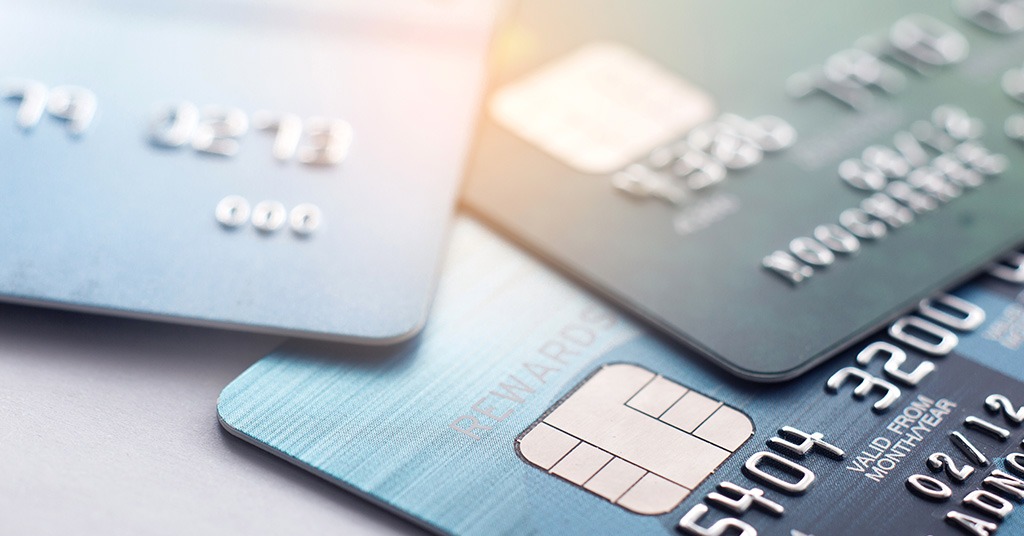APR, grace period, credit score… don’t worry, we’ll help you to figure out what it is

Credit cards and credit score in the US: basic guide. Source: shutterstock.com
Americans used to have dozens of credit cards. Some of them are used to pay for gas, the other ones “are in charge” of food and clothing. Even some large stores have their own cards.
Cards have different conditions. Some are beneficial when it comes to small payments, while others can be good for bigger purchases. You need to figure this out once, and then it will be clear for you whether you need a “new super-XXL-extra-card” from another bank or not.
Why are there so many cards?
The US system has always had many banks. The government forbade them to enter the market (in terms of being legally on the national level) for a long time. Even in a time of famine, thousands of small banks worked in the states instead of several large banks that could cover the entire country. Furthermore, these small banks did not even have the right to open a branch in another state.
Even now there are thousands of them and they are competing among themselves, offering new and new credit programs.
Major card-related definitions

Most credit cards can be ordered online. Source: shutterstock.com
- APR stands for annual percentage rate. When you borrow money, you give it back with interest (this very APR). A lot of financial institutions do not charge clients if they manage to repay the loan on time. But still, there are some fees that are summed up in APR eventually.
- Annual fee is just an annual fee. Not all the cards have this type of fee. This is the fixed amount that you have to pay for using the card (if it is a part of the deal, according to terms and conditions).
- Credit limit is the maximum amount of loan that you can take from the financial institution. Usually, it is low at the start, and then rises along with your credit score if you pay your bills on time.
- Grace period is the time during which you can repay a debt without fees. Typically, banks give 25-60 days for a refund, but it varies from bank to bank.
- Transfer fee is a payment that you make when you move a balance (i.e. transferring credit funds from one card to another, or to a bank account).
- Deposit is the sum that you should put in your account in order to gain a card. Not all the banks work like this, but some financial institutions require a minimum deposit (insurance deposit). Thus, a bank wouldn’t give it back if will fail to repay the loan. This condition usually applies to people with a low credit score.
- Cashback is when the bank pays you back the percentage of the amount you spent.
- Rewards are just bonuses for using the card.
Most credit cards can be ordered online, so they will be sent to you by mail. You can pay off the debt in various ways. Sometimes people even use another credit card to repay debt. Some credit cards are used constantly in order to get bonuses (the more you use the more you get), others can be used just once a year, and the conditions will remain the same.
Credit score
America is a very large country with a huge population and an extremely developed transport network. Americans love to travel and move constantly. Here the problem arises: there is an unknown person standing in front of you and wants to rent your apartment. What if they are some kind of crook, or irresponsible, unemployed person with a mountain of debts?

Credit score is an indicator of whether you can trust a citizen in financial terms. Source: shutterstock.com
But somehow, the issue has resolved itself. Around the 80s of the last century, a points system came from the world of banking relations. This system punishes you if you haven’t paid for the apartment, utility bills, etc. The US financial system decreases your score if you failed to pay off debts. And vice versa, if you pay your bills on time on time points will increase (not as fast as they will decrease if you fail to repay the loan). For example, if you filed for bankruptcy, your credit score would decrease significantly.
In other words, credit score is an indicator of whether you can trust a citizen in financial terms.
It’s true that it’s difficult to live in the USA without a credit score, although it is possible. You cannot rent a decent apartment, you won’t use banking services, and you might not even be hired in most cases.
Good and bad credit score
In the USA, credit score is a three-digit number, from about 300 to about 900. Nobody knows why exactly these values became the standard for evaluating people, but anyway, it happened. And this is not important. The main thing is that the system works. Moreover, extreme values are practically unattainable, everyone “floats” somewhere in the middle, for example:
- 300 – Out of reach.
- 400 – It’s very bad. Nobody will have anything to do with you.
- 500 – Still bad. You may not be able to rent an apartment. Most likely, a bank won’t give you a loan or credit card either.
- 600 – Still not that good. You’ll probably be able to rent an apartment, but not in a good neighborhood. You’ll probably get a loan as well, but the interest rate will be rather high.
- 680 – It is a normal level of an average American.
- 720 – Very good, this means you are considered a trusted member of society. You get access to luxury apartments, credit cards on reasonable terms, etc
- 800 – Splendid. You are the most valuable customer. Banks, providers of all kinds of services will offer you the best conditions, interest-free loans, etc. Basically, be ready to turn off the phone and delete a bunch of spam from your mail.
- 900 – Out of reach.
SEE ALSO:









